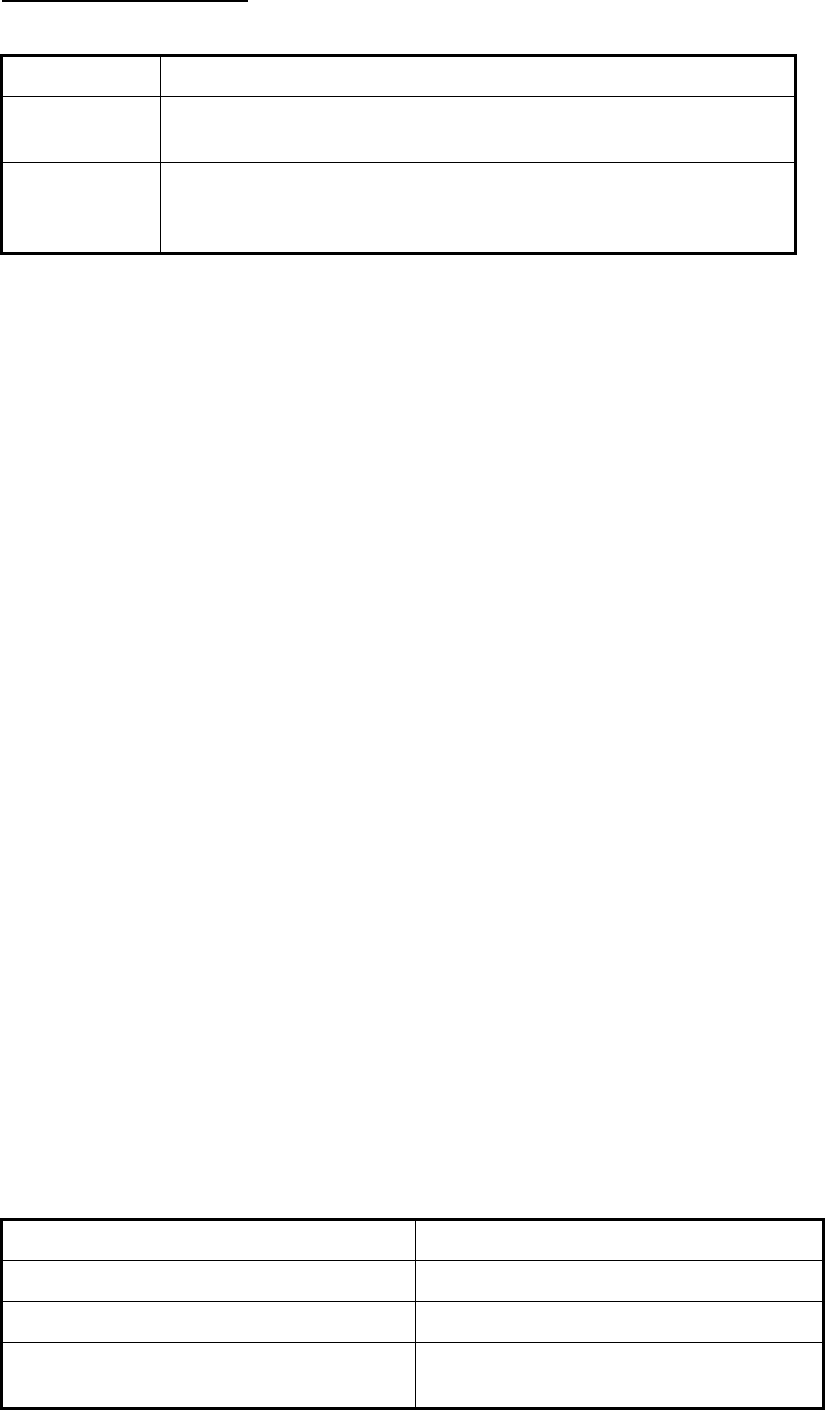
3. DSC OVERVIEW
3-2
Contents of a DSC call
• Calling category
• Station ID (MMSI)
Your ship ID and sending station ID. Coast station ID begins with 00; Group ID be-
gins with 0.
• Priority
Distress: Grave and imminent danger and request immediate assistance.
Urgency: A calling station has a very urgent call to transmit concerning safety of
ship, aircraft or other vehicle or safety of person.
Safety: A station is about to transmit a call containing an important navigational or
meteorological warning.
Routine: General calling
• Communication mode
TELEPHONE: Telephone (J3E) by SSB radiotelephone
NBDP-ARQ*: Telex (J2B) mode ARQ via NBDP Terminal Unit
NBDP-FEC*: Telex (J2B) mode FEC via NBDP Terminal Unit
*: NBDP terminal unit is required.
• Communication frequency
Working frequency used to call by telephone or NBDP. The sending station may
have the receiving station (ship or coast station) assign the frequency to use.
• Position
Position can be automatically or manually set.
• DSC frequency
DSC frequency to use. If the call priority is SAFETY, URGENCY or DISTRESS, se-
lect a DSC distress frequency.
• End code
The end of a DSC call is indicated with "EOS" (acknowledgement, acknowledge-
ment required, no acknowledgement required).
3.3 Audio Alarms
When you receive a distress alert or general call addressed to your ship, the audio and
visual alarms are released. The audio alarm can be silenced with the CANCEL key.
Call category Call
DISTRESS DISTRESS ALERT, DISTRESS RELAY AREA, DISTRESS
RELAY INDIVIDUAL
GENERAL MEDICAL MSG, NEUTRAL MSG, INDIVIDUAL MSG, PSTN MSG,
TEST MSG, GROUP MSG, AREA MSG, POSITION MSG,
POLLING MSG
Alarm Frequency (interval)
Safety call received 750 Hz and 650 Hz (50 ms)
Routine call received 750 Hz and 650 Hz (50 ms)
While DISTRESS key is pressed for four
seconds
2000 Hz and 0 Hz (500 ms)


















